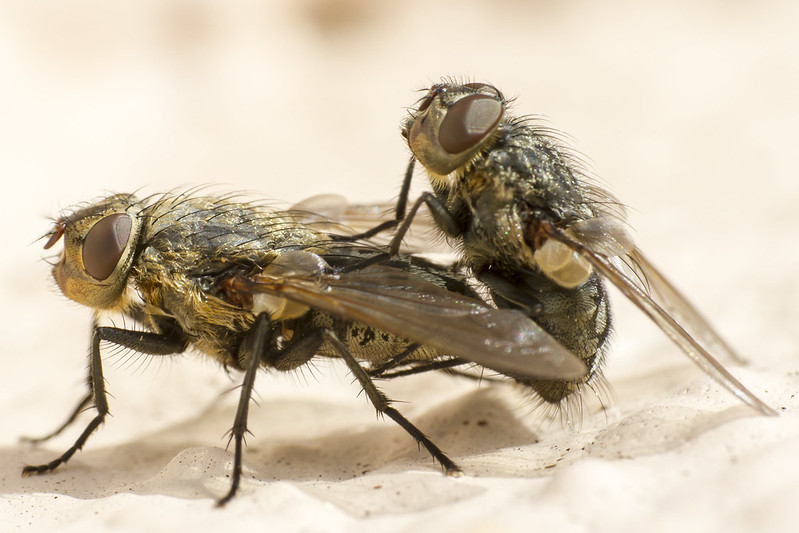Secondary Biology Reference Notes, Tutorials and Exercise QuestionsConcept of reproduction
The process by which mature individuals produce offspring is called reproduction. Reproduction is a characteristic of all living organisms and prevents extinction of a species.
There are two types of reproduction:
Importance of reproduction
The main importance to reproduction is to give rise to young ones of same ensuring continuity of the group.
Chromosomes, mitosis and meiosis (mention gamete formation)
Cell Division
Cell division starts with division of nucleus. In the nucleus are a number of thread-like structures called chromosomes, which occur in pairs known as homologous chromosomes. Each chromosome contains-genes that determine the characteristics of an organism. The cells in each organism contains a specific number of chromosomes. There are two types of cell division:
a) Mitosis This takes place in all body cells of an organism to bring about increase in number of cells, resulting in growth and repair. The number of chromosomes in daughter cells remain the same as that in the mother cell. Mitosis is divided into five main stages:
b) Meiosis
This type of cell division takes place in reproductive organs (gonads) to produce gametes. The number of chromosomes in the gamete is half that in the mother cell. Meiosis involves two divisions of the parental cell resulting into four daughter cells. The mother cell has the diploid number of chromosomes. The four cells (gametes) have half the number of chromosomes (haploid) that the mother cell had, in the first meiotic division there is a reduction in the chromosome number because homologous chromosomes and not chromatids separate. Homologue pairs separate during a first round of cell division, called meiosis I. Sister chromatids separate during a second round, called meiosis II. Since cell division occurs twice during meiosis, one starting cell can produce four gametes (eggs or sperm). In each round of division, cells go through four stages: prophase, metaphase, anaphase, and telophase. [additional information by the Khan Academy] Meiosis I (First Meiotic division) Before entering meiosis I, a cell must first go through interphase. As in mitosis the cell prepares for division, this involves replication of chromosomes, organelles and buildup of energy to be used during the meiotic division.
Usually the two daughter cells go into a short resting stage (interphase) but sometimes the chromosomes remain condensed and the daughter cells go straight into metaphase of second meiotic division. The second meiotic division takes place just like mitosis.
Asexual reproduction
Asexual reproduction is the formation of offspring from a single parent, the offspring are identical to the parent.
Types of asexual reproduction.
Binary fission in amoeba
This involves the division of the parent organism into two daughter cells, the nucleus first divides into two and then the cytoplasm separates into two portions. Binary fission also occurs in bacteria, Paramecium, Trypanosoma and Euglena.
Spore formation/reproduction in mucor / Rhizopus
Rhizopus is a saprophytic fungus which grows on various substrate such as bread, rotting fruits or other decaying organic matter. The vegetative body is called mycelium which has many branched threads called hyphae. Horizontal hyphae are called stolons, vertical hyphae are called sporangiophore.
The tips of sporangiophore become swollen to form sporangia, the spore bearing structure, each sporangium contains many spores, as it matures and ripens, it turns black in colour. When fully mature the sporangium wall burst and release spores which are dispersed by wind or insects. When spores land on moist substratum, they germinate and grow into a new Rhizopus and start another generation. Spore formation in ferns The fern plant is called a sporophyte, on the lower side of the mature leaves are sari (Singular: sorus) which bear spores. Budding in yeast
Budding involves the formation of a protrusion called a bud from the body of the organism, the bud separates from the parent cell, in yeast budding goes on so fast and the first bud starts to form another bud before the separation. A short chain or mass of cells is formed.
3 Comments
Gigy tesy
17/6/2022 19:36:00
I need questions on genetic
Reply
Leave a Reply. |
Archives
January 2024
Categories
All
|
Can't find what you are looking for? Don't worry, Use the Search Box Below.
|
Primary Resources
College Resources
|
Secondary Resources
|
Contact Us
Manyam Franchise
P.O Box 1189 - 40200 Kisii Tel: 0728 450 424 Tel: 0738 619 279 E-mail - sales@manyamfranchise.com |

 RSS Feed
RSS Feed

